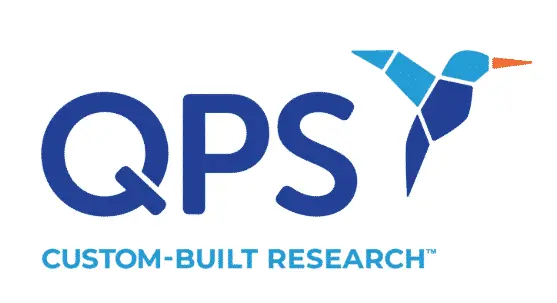All Radiolabel ADME studies are done in the QPS DMPK labs in Newark, Delaware, USA
Drug companies perform ADME (Absorption, Distribution, Metabolism, and Excretion) studies as an integral part of the drug discovery and development process. These studies provide crucial information about how a drug candidate behaves within a living organism, influencing its pharmacokinetics and overall disposition.
A well-conceived and executed preclinical radiolabeled ADME program will provide you with a detailed assessment of the total fate (mass balance, route and rate of excretion, tissue distribution, metabolic pathways, and identity and quantity of metabolites) of your drug candidate to support regulatory submissions.
Preclinical Radiolabelled ADME Studies
- Mass Balance/Routes of Excretion
- Placental/Milk Transfer
- Quantitative Whole-Body Autoradiography (QWBA)
- Microautoradiography (MARG)
- Plasma Protein Binding; RBC/Plasma Distribution
- Assessment of Covalent Binding
- In Vitro Species Comparison of Metabolism
- Metabolic Reaction Phenotyping
- Metabolite Profiling, Identification, & Radioactivity Quantification

Human Radiolabeled AME Studies
- Consultation and Preparation of Clinical Study Protocol; including determination of human radiation dosimetry estimates on the basis of recommendations by MIRD , ICRP , and/or the Sponsor.
- Ethics Committee & Competent Authority Submission.
- Preparation and Release of Radiolabeled IMP According to GMP Annex 13 by a Licensed Radiopharmacy; including homogeneity and assessment of radiopurity of the IMP in formulation by HPLC-radio flow-through detection prior to dispensing.
- Drug Administration of Radiolabeled IMP by a Designated and Nuclear Medicine Physician.
- Flawless Execution of Study According to Protocol.
- Collection, Processing, and Analysis of Radioactive Human Blood, Plasma, and Excreta (urine, feces, and expired air).
- Metabolite Profiling, Identification, & Radioactivity Quantification.
- Preparation and Submission of an Integrated Clinical Study Report (CSR).
Primary reasons drug companies conduct ADME studies
1. Pharmacokinetic and Bioavailability Assessment:
- Absorption: Determine how well a drug is absorbed into the bloodstream after administration (e.g., oral, intravenous).
- Oral Bioavailability: Assess the fraction of an orally administered drug that reaches systemic circulation, providing insights into its availability to be uptake by receptors.
2. Distribution:
- Plasma Protein binding: Determine the fraction of drug that is freely in circulation and not bound to plasma proteins, such as serum albumin, alpha-1 acid glycoprotein, lipoproteins. In theory, the bound drugs will not be able to interact with the relevant receptors. This measurement does not address the kinetic of on- and off- rate from the plasma proteins.
- Covalent binding: Determine the extent of drug that is not irreversibly bound and will be able to interact with receptors.
- Tissue Distribution: Investigate how a drug is distributed within the body, including its entry into organs, tissues, and potential redistribution back to systemic circulation.
- Drug Transport: Investigate how a drug is preferentially efflux and/or update within specific cells, and potentially alter the drug concentration of specific organs.
3. Metabolism Characterization:
- Metabolic Stability: Evaluate the susceptibility of a drug to metabolic transformation, mainly by liver enzymes and other enzyme systems in other organs.
- Metabolite Identification: Identify and characterize metabolites generated during drug metabolism.
- Identification of Reactive Metabolites: Assess the formation of reactive intermediates that may lead to adverse effects.
4. Prediction of Drug-Drug Interactions (DDIs):
- Enzyme Inhibition/Induction: Assess the potential for a drug to inhibit or induce drug-metabolizing and drug transport enzymes, predicting potential DDIs.
5. Excretion:
- Route and extend of elimination: Understand how the drug and its metabolites are eliminated and whether they may contribute to decrease in safety margin due to potential reabsorption and increasing plasma half-life.
6. Optimization of Formulations:
- Route of Administration: Determine the optimal route of administration based on absorption characteristics.
- Dosage Formulations: Optimize drug formulations to enhance bioavailability and stability.
7. Pharmacokinetic Modeling:
- Parameter Estimation: Estimate key pharmacokinetic parameters, such as half-life, clearance, and volume of distribution.
- Modeling: Develop mathematical models to predict drug behavior in various scenarios.
8. Clinical Dose Prediction:
- Human Dose Estimation: Use preclinical ADME data to predict an appropriate starting dose for human clinical trials.
- Dose Optimization: Inform dose adjustments based on pharmacokinetic parameters.
9. Regulatory Compliance:
- Regulatory Submissions: Provide comprehensive ADME data as part of regulatory submissions for drug approval.
- Regulatory Guidance: Adhere to regulatory guidelines that recommend the inclusion of ADME studies in drug development programs.
10. Risk Mitigation:
- Identification of Risks: Identify potential risks associated with the pharmacokinetics and metabolism of the drug.
- Mitigation Strategies: Develop strategies to address identified risks and improve the overall safety profile.
11. Understanding Variability:
- Inter-Individual Variability: Investigate how individual differences in drug metabolism may impact drug response.
- Population Pharmacokinetics: Contribute to understanding variability in drug behavior across patient populations.
12. Decision-Making in Drug Development
- Go/No-Go Decisions: Support decision-making processes for advancing or discontinuing drug candidates based on ADME profiles.
- Portfolio Management: Inform the prioritization of drug candidates within a company's pipeline.
Overall, ADME studies are essential for making informed decisions at different stages of drug development, ensuring that drug candidates progress through the pipeline with an optimized balance of efficacy, safety, and pharmacokinetic properties. The results of these studies contribute significantly to the success and regulatory approval of new drugs.
Types of equipment commonly used in ADME studies
1. Analytical Instruments:
- Liquid Chromatography-Tandem Mass Spectrometry and High Resolution Mass Spectrometry (LC MS/MS and LC-HRMS): Analyze drug and metabolite concentrations in biological samples with high sensitivity and specificity.
- Ultra High-Performance Liquid Chromatography (UHPLC): Separate and quantify compounds in complex biological matrices.
- Gas Chromatography-Tandem Mass Spectrometry (GC-MS/MS and GC-HRMS): Analyze volatile compounds and metabolites.
2. Protein Binding Equipment:
- Plasma Protein Binding Systems: Harvard Apparatus and Rapid Equilibrium Dialysis (RED) device for equilibrium dialysis, centrifuges and ultrafiltration tubes for ultrafiltration, and ultracentrifuges for ultracentrifugation.
3. In Vitro Metabolism Equipment:
- Microsomal Incubation Systems: Simulate drug metabolism in vitro using microsomes from metabolizing organs. Other cellular systems, such as, S9 fraction, hepatocytes, adipocytes, synthetic enzymes…
- Enzyme Incubators: Maintain controlled conditions for enzyme-mediated reactions during in vitro studies.
4. Cell Culture Equipment:
- Cell Incubators: Provide optimal conditions for maintaining cell cultures used in in vitro metabolism studies.
- Cell Culture Plates: Utilized for experiments involving cell-based assays to study drug transport and metabolism.
5. Animal Housing and Handling Equipment:
- Animal Cages: Provide appropriate housing for laboratory animals during dosing and sample collection.
- Animal Identification Systems: Ensure proper identification of animals throughout the study.
- Animal Dosing Apparatus: Administer precise doses of drugs to animals using oral gavage, intravenous injection, or other routes.
6. Blood and Tissue Collection Equipment:
- Blood Collection Tubes: Collect blood samples for pharmacokinetic analysis.
- Centrifuges: Separate blood components, such as plasma or serum, from whole blood.
- Tissue Harvesting Instruments: Surgical tools for harvesting organs and tissues during necropsy for ex vivo analysis.
7. Radioactivity Counting Equipment:
- Scintillation Counters: Measure the radioactivity of samples labeled with radioactive isotopes (e.g., tritium, carbon-14) to quantify drug and metabolites concentrations.
8. Excretion Studies Equipment:
- Metabolic Cages: Collect urine and feces separately for studying renal and fecal excretion of drugs and metabolites.
- Urine and Fecal Collection Systems: Facilitate the collection and storage of excreta samples.
9. Pharmacokinetic Modeling Tools:
- Computers and Software: Analyze and model pharmacokinetic data to estimate key parameters such as half-life, clearance, and bioavailability.
10. Imaging Equipment:
- Autoradiography Systems: Visualize and quantify the distribution of radiolabeled drugs within tissues.
- Whole-Body Imaging Systems: Assess the biodistribution of drugs in living organisms.
11. Data Analysis and Documentation Tools:
- Laboratory Information Management Systems (LIMS): Manage and document experimental data, sample information, and results.
- Computational Tools: Utilize software for data analysis, statistical modeling, and visualization.
12. Safety Equipment:
- Personal Protective Equipment (PPE): Ensure the safety of researchers handling potentially hazardous substances.
- Fume Hoods: Provide ventilation for handling chemicals and protecting researchers from exposure.
- By placing your studies with QPS, you will benefit from peer-to-peer communication with our expert ADME scientists, who have extensive industry and CRO experience, enabling optimal planning and execution of your studies.
- A senior technical professional will be assigned to facilitate the rapid progress of your drug candidate by shepherding the compound through the various preclinical studies to clinical ADME studies.
- Any compound specific and/or sample handling procedures will be seamlessly transferred between QPS preclinical and clinical teams to minimize delays at the different stages of drug development, which ensures rapid generation and rigorous analysis of preclinical ADME and clinical hAME data, resulting in high-quality study reports ready for regulatory filing.





